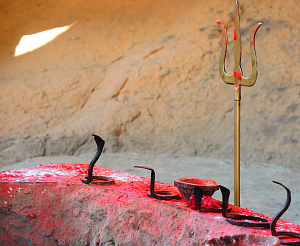News
-
 Pranayama workshop, Mar 1-7
Pranayama workshop, Mar 1-7
-
 21-day Pranayama challenge
21-day Pranayama challenge
-
 Nāda meditation workshop, January 8-12
Nāda meditation workshop, January 8-12
-
 April 3, Navaratri with Yogi Matsyendranath Maharaj, Australia, Queensland
April 3, Navaratri with Yogi Matsyendranath Maharaj, Australia, Queensland
-
 March 17, 2020. Purifiying Pranayama With Yogi Matsyendra Nath
March 17, 2020. Purifiying Pranayama With Yogi Matsyendra Nath
-
 November 2019, Tantra Workshop Series in Argentina
November 2019, Tantra Workshop Series in Argentina
-
 Workshop in Gualeguaychu
Workshop in Gualeguaychu
-
 17-18 November 2018, Yogi Matsyendranath in Źarate (Argentina)
17-18 November 2018, Yogi Matsyendranath in Źarate (Argentina)
-
 15-16 November 2018, Yogi Matsyendranath visit to Uruguay
15-16 November 2018, Yogi Matsyendranath visit to Uruguay
-
 12 Nov 2018, Lecture at USAL (Salvador University)
12 Nov 2018, Lecture at USAL (Salvador University)
-
 10-11 November 2018, Workshops in Quilmes and La Plata (Argentina)
10-11 November 2018, Workshops in Quilmes and La Plata (Argentina)
-
 8 November 2018, Open conference in Necochea (Argentina)
8 November 2018, Open conference in Necochea (Argentina)
-
 2,3,4 November 2018 - Participating in XVI Retreat International of Yoga and Meditation
2,3,4 November 2018 - Participating in XVI Retreat International of Yoga and Meditation
-
 Programme in Québec (Canada) 13-16 June
Programme in Québec (Canada) 13-16 June
-
 Melbourne Book Launch
Melbourne Book Launch
-
 4-years Summer Program
4-years Summer Program
-
 Biography of a Russian Yogi
Biography of a Russian Yogi
-
 November 2017, Visit of Yogi Matsyendranath to Argentina
November 2017, Visit of Yogi Matsyendranath to Argentina
-
 Satsangs of Yogi Matsyendranatha Maharaj in Berlin
Satsangs of Yogi Matsyendranatha Maharaj in Berlin
-
 Seminars and trainings in June-July 2015 (France)
Seminars and trainings in June-July 2015 (France)
Tag cloud
Authorization
Energy awakening
 18.03.2021
18.03.2021
Such famous Gurus in yoga as Gorakhnath and many others have talked about different effects of awakening energy. They compared this movement to the ant, the vihangama bird, etc.
Term “vihaṅgamā” is used in some yogic texts where it is said that in yoga practice there is a movement of energy alike an ant [पिपीलिका pipīlikā , monkey-like jerk or jump [कपि kapi], and there is bird-like movement flying [विहङ्गमा vihaṅgamā]. These three concepts are found in different descriptions by Natha yogis, for example, by famous Jnaneshwara (Jnananatha). Vihangama-jati is one who is spiritually born in the yogic tradition, who develops faster than others. This term is used not only among Nathas but also by some Gurus of the related traditions. This is also found in the texts of Kabir who was also a very interesting character. He was both a Muslim and a Hindu, he also worshiped Gorakshanath and dedicated poetry to him. Some parts of his works were included in the Sikh Grant-sahib (this is a "Guru book").
Kabir described these processes as yogic mudras:
-
"Pipilika" (movement of energy like an ant) is bhuchari-mudra (movement on the ground or in the ground), he recommended to concentrate mentally in manipura.
-
"Shesha" (movement of energy like a snake) is concentration on the upward movement in the spine, the practice of khechari mudra.
-
"Vihangama" (movement of energy like a bird) is the rise of energy to the head, he described as khechari and shambhavi mudras. Shambhavi derives from “sham” (rest), hence, for example, the Buddhist practice of shamatha that also means peace.
-
"Mina" (movement of energy like a fish) is concentration on the tip of the nose, a practice of the awareness of the movement of inhalation and exhalation. Kabir called this chanchari-mudra.
-
"Kapi-marga" (movement of energy like a monkey) he called alakshya-mudra (a state outside of an object or symbol).
Therefore, it is not a surprise when some Gurus say that mudras pass arbitrarily during the awakening of the Kundalini. Moreover, the very term "mudra" itself is Shakti and means the one that bestows "joy", also something that means mixing, union of consciousness and prana. Such merge of prana and consciousness reveals the potential of one and the other, which, as a rule, is accompanied by a state of deep peace, sobriety, but also liveliness at the same time. In the text published by Guru Shri Narharinath in Nepal "Goraksha Yoga Manjari" parallels between Sri Vidya and the teachings of Gorakshanath are provided. This text was written by Siddha Chidiyanath who lived in the 15th century at Mehangarh in Rajasthan, and he describes mudras as a state of energy and consciousness. It means mudras are not just wrist positions or bodily positions, such as mahamudra, mahabandha, etc., but these are contemplative processes, observations and transformations of the mind. In the same way hearing the sounds of nada is not about the sound itself as an ordinary materialistic person, which in fact is the majority, might think. In Indian tradition it is something of higher magnitude than just sounds. "Nada" is a pulsation as such, the force of creation, life and destruction of the Universe, Nada is God himself.
Author: Yogi Matsyendranath Maharaj

